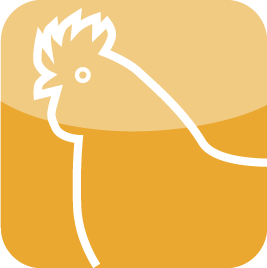Category: Fish
By: Tobias Lasner, Rasmus Nielsen
Danish RAS trout farms remain competitive thanks to productivity growth

Danish trout farm, partly RAS

Physical labor productivity and Cash Cost of selected trout grow-out-systems in Denmark 2013 (own data)
The Danish trout sector is traditionally dominated by pond aquaculture. The tightening of environmental regulations in recent decades has led to an ongoing restructuring of the Danish trout farming: Larger farms using recirculating techniques internalize the costs of effluent discharge and enhance productivity.
With an annual production in 2014 of 30,400 tonnes Denmark is one of the leading trout producers inside the EU. The majority of the rainbow trout produced are portion-sized trout, which are intended for the export market. 65 % of Danish trout were exported to the German seafood market in 2013. The sector consists of all in all 190 inland trout farms, of which 157 are traditional operations [Statistics Denmark, 2016]. These traditional trout farms commonly use earthen ponds, such as, the agri benchmark dataset DK-TRR-150 does. With a total production of 17,200 tonnes, this type of farm is still the most present in terms of national production.
A few traditional farms (9), such as, the agri benchmark dataset DK-TRR-55org, have converted to organic production, aiming at the niche market for organic aquaculture products. By investing in recirculating aquaculture system (RAS) technology trout farmers meet the strict environmental requirements towards aquaculture in Denmark. Simultaneously, the RAS technology enhances the productivity of these fish farms. The development towards a high degree of automatization has been pushed by so called ‘model ’ farms, which started up in 2005-2006; like the agri benchmark dataset DKK-TRR-270 and the agri benchmark dataset DK-TRR-700 represent. The model farms are divided into two classes were the most advanced is called ‘model 3’ farm, which is almost identical with an RAS system, but these farms are not fully closed and have discharges/emissions to the surrounding environment. All Danish freshwater trout production is located in Jutland [Lasner,Brinker,Nielsen,Rad, 2016, 1-15].
Environmental law requirements regarding the effluent discharge have forced fish farmers to intensify aquaculture, if they want to enlarge production. A tighten bureaucracy, growing costs and tense international competition have created a need to optimize cost-effective fish farming. In particular, labour and energy costs are remarkable high in Denmark compared to international trade rivals like Turkish trout farmers [Nielsen,Asche,Nielsen: 2015, 1-15].
In fact, the efforts of the recent years seem to payoff: DK-TRR-700 has an almost double productivity as the most extensive system DK-TRR-55org; measured as kilogram Live Weight (LW) gained in grow-out per hour labour input (cf. Figure 1). Cash costs of DK-TRR-700 are the lowest of the sampled extensive and intensive production systems. Feed (Mean Value 47%), fingerlings (MV 22%), energy (MV 9%) and wages (MV 4%) are the main cost positions out of total cash costs. Here DK-TRR-700 benefits from its high productivity. Interestingly, model 1 farm (DKK-TRR-270) does not perform better than traditional farms like DK-TRR-150 in terms of productivity, but makes it slightly up with lower cash costs per kilogram trout LW produced. In fact, the economics of scale completely emerges from model 3 farm DK-TRR-700. In 2014, only 15 RAS farms of type model 3 produced 8,760 tonnes, which accords to almost 30 % of Danish trout production.
Sources:
Lasner T.; Brinker A.; Nielsen R. and Rad F. (2016): Establishing a Benchmarking for Fish Farming. Profitability, Productivity and Energy Efficiency of German, Danish and Turkish Rainbow Trout Grow-out Systems.
Online available ![]() here
here
Nielsen R., Asche F. & Nielsen M. (2015): Restructuring European freshwater aquaculture from family-owned to large-scale firms - lessons from Danish aquaculture.
Online available ![]() here
here
Statistics Denmark (2016): Business sectors. Fishery and aquaculture. Accounts statistics for aquaculture by unit, farm type and items.
Online available ![]() here
here





